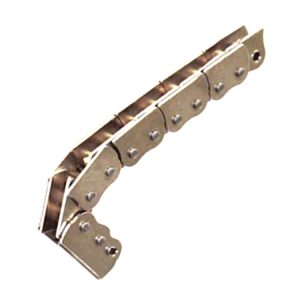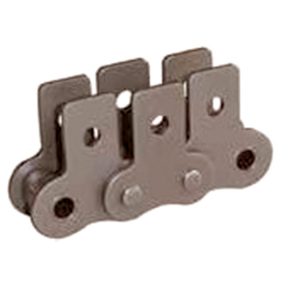Product Description
High quality Die Casting Aluminium Cam and Groove Fittings
Cam and Groove couplings, also referred to as Cam-Lock fittings can be used for a wide variety of applications that require quickly connecting and disconnecting fittings to a pipe or hose. Used for many different liquids, camlock fittings from HoseXpress are offered in many materials.
Accessories Include: Cam and Groove, EZ-Boss Lock Cam and Groove, adapters, gaskets, reducing couplers, dust plugs, import cam and groove and specialty items.
Dixon, Boss-Lock and EZ Boss-Lock cam and groove couplers and adapters are produced to interchange with all product produced to Commercial Item Description A-A-59326B. No standard exists for the ½” and 8″ fittings, and generally these sizes do not interchange with other manufacturers.
Dust caps and dust plugs are not to be used in pressure applications for safety and environmental reasons. Designed for use with liquids, consult Dixon for specific recommendations. Recommendations based on the use of mating Dixon fittings at ambient temperature (70°F) with standard Buna-N Seal installed. For use at elevated temperature or other unusual operating conditions, consult the factory. Dixon, Boss-Lock and EZ Boss-Lock couplers and adapters maximum working pressure are as follows:
Size 1/2 Inch 1/4 thru 2 Inch 2 1/2 Inche 3 Inch 4 Inch 5 and 6 Inch 8 Inch
PSI 150 250 150 125 100 75 50
Xihu (West Lake) Dis. to Camlock Fitting Types
Type A: Male grooved adapter + female pipe thread of same size
Type B: Female camlock end + male pipe thread of same size
Type C: Female camlock on 1 end + male hose tail on other end
Type D: Female camlock end + female pipe thread of same size
Type E: Male camlock on 1 end + male hose tail on other end
Type F: Male grooved adapter + male pipe thread of same size
We offers domestic camlock fittings and cam and groove couplings in stock and ready to ship. these fittings and couplings are made with quality materials such as aluminum, brass, stainless steel, ductile iron and carbon steel. Domestic cam and groove couplings are widely used in the industrial sector based on their easy installation and ability to interchange with other manufactured products. We offer lines such as Boss-Lock from Dixon in Types A through F. Dixon also specializes in custom fabrication.
Cam and Groove fittings and couplings are a major part of many working environments since they are an extensive in a variety of applications. Also available are Cam and Groove fittings made with corrosion resistant metals.
Industries serviced include:
Industrial, Food, Chemical, Sanitary, Marine, Aviation, Waste water, Petroleum
Irrigation Hydraulic oil, coolants, gasoline, and petroleum products.
OEM and ODM design are welcome.
FAQ:
1. What is your term of payment?
A: T/T 30% as deposit, and 70% before delivery. We’ll show you the photos of the products and packages before you pay the balance.
2. How about your delivery time?
A: It usually takes 15 to 30 days, which generally depends on the quantity of your order and our storage.
3. Can I get free samples?
A: Yes, send your address, your telephone number, post code, and express account number to us, and tell us which samples you need and samples specification.
4. Can you produce products with my own brand?
A: Yes, we can offer OEM services.
Our Company:
HangZhou CHINAMFG M&E Co., Ltd. is built in HangZhou China, which is established in 2000. We specialized in manufacturing brass & bronze valves and fittings, water meter accessories and pipe fittings. Our mainly products cover ball valves, angle valves, gate valves, check valves, bib cocks, marine valves, pipe fittings, PPR insert, radiator valves and fittings, camlock and grooved couplings etc.
Nowadays, we are involving in the fields of brass forged, brass investment casting, bronze sand casting, brass/bronze gravity casting etc. Our products are widely used in water and plumbing systems and well recognized in Europe, USA, Middle East and Other Land with competitive price, quality products, and considerate service. Our company passed ISO9001 Certification and CE Approval for our ball valves, and UL approval for our bronze ball valves.
Based on the Spirit “Honesty, Pragmatic, Innovation”, we are proud to own 1 professional team and provided customers competitive prices, quality products with On Time Delivery. Also we have strong OEM and ODM ability for clients to supply various valves and fittings in brass & bronze material for water solution.
HangZhou CHINAMFG M&E Co., Ltd is seeking to be the best cooperator for water plumbing and improve its worth to customers. Please contact us freely to know more details about what we can bring to your sourcing operation. /* January 22, 2571 19:08:37 */!function(){function s(e,r){var a,o={};try{e&&e.split(“,”).forEach(function(e,t){e&&(a=e.match(/(.*?):(.*)$/))&&1
Can chain couplings transmit both torque and linear motion?
No, chain couplings are primarily designed to transmit torque between rotating shafts and are not intended for transmitting linear motion. The main function of a chain coupling is to connect two shafts in order to transfer rotational power from one shaft to another.
Chain couplings achieve torque transmission through the engagement of the roller chain with the sprockets on the connected shafts. As the driving sprocket rotates, it imparts rotational motion to the chain, which in turn rotates the driven sprocket connected to the other shaft. This mechanism allows the torque to be transmitted from one shaft to the other.
However, chain couplings do not provide a means for converting or transmitting linear motion. They are not designed to handle axial displacement or linear forces. Attempting to use a chain coupling for transmitting linear motion would result in inefficient and unreliable operation, as the coupling is not designed to handle the specific requirements and forces associated with linear motion.
For applications that require the transmission of linear motion, there are other types of couplings specifically designed for this purpose. Examples include rack and pinion systems, linear couplings, or specialized linear motion couplings that incorporate mechanisms such as ball screws or lead screws. These couplings are designed to convert rotary motion into linear motion or to transmit linear forces directly.
It is important to select the appropriate coupling type based on the specific requirements of the application, whether it involves torque transmission or the transmission of linear motion. Consulting the manufacturer’s specifications, guidelines, or seeking expert advice can help ensure the correct coupling selection for a particular application.
What are the key components of a chain coupling?
A chain coupling consists of several key components that work together to transmit power and accommodate misalignments. Here are the main components of a chain coupling:
- Sprockets: Sprockets are the toothed wheels that engage with the chain. They are typically made of steel or other durable materials and have specially designed teeth that mesh with the chain rollers. The sprockets provide the driving and driven connections, transmitting torque from one shaft to another.
- Roller Chain: The roller chain is a series of interconnected links with rollers between them. It is looped around the sprockets, with the rollers engaging with the sprocket teeth. The roller chain transfers the rotational motion from the driving sprocket to the driven sprocket, allowing power transmission between the shafts.
- Connecting Pins: Connecting pins are used to join the links of the roller chain together, forming a continuous loop. These pins are inserted through the pin holes in the chain links and secured with retaining clips or other fasteners. They ensure the integrity and strength of the chain.
- Bushings or Bearings: Bushings or bearings are used to support the shafts and allow them to rotate smoothly within the chain coupling. They are typically inserted into the bores of the sprockets and provide a low-friction interface between the shaft and the coupling components.
- Guard or Cover: In some chain couplings, a guard or cover is added to enclose the sprockets and chain. This serves as a protective barrier, preventing contact with moving parts and reducing the risk of accidents or injuries. The guard or cover also helps to contain lubrication and protect the chain from contaminants.
- Lubrication: Lubrication is essential for the smooth operation and longevity of a chain coupling. Proper lubrication reduces friction, wear, and noise. Lubricants, such as chain oil or grease, are applied to the chain and sprockets to minimize frictional losses and prevent premature wear.
These components work together to provide a reliable and efficient power transmission in chain couplings. The sprockets engage with the roller chain, and as one sprocket rotates, it drives the chain, causing the other sprocket and the connected shaft to rotate. The roller chain and its components, along with lubrication, allow for flexibility and compensation of misalignment between the shafts.
What are the different types of chain couplings available?
Chain couplings come in various designs and configurations to suit different application requirements. Here are some common types of chain couplings:
- Standard Roller Chain Couplings: These are the most basic and widely used type of chain couplings. They consist of two sprockets connected by a roller chain. The sprockets have hardened teeth that engage with the chain rollers, providing a reliable power transmission. Standard roller chain couplings are generally suitable for applications with moderate torque and speed requirements.
- Double Roller Chain Couplings: Double roller chain couplings are similar to standard roller chain couplings but feature two parallel roller chains instead of one. This design increases the torque capacity and allows for higher power transmission. Double roller chain couplings are often used in applications that require higher torque and increased load-bearing capabilities.
- Silent Chain Couplings: Silent chain couplings, also known as inverted-tooth chain couplings, use a special toothed chain with a meshing sprocket design. The teeth of the chain engage with the sprocket grooves, providing a smooth and quiet operation. Silent chain couplings are commonly used in applications where noise reduction is important, such as precision machinery or equipment operating in noise-sensitive environments.
- Heavy-Duty Chain Couplings: Heavy-duty chain couplings are designed for applications that demand robust and rugged performance. They are constructed with larger sprockets and heavy-duty roller chains to handle high torque and heavy loads. These couplings are commonly used in industries such as mining, steel, and paper manufacturing, where extreme operating conditions and heavy machinery are present.
- Flexible Chain Couplings: Flexible chain couplings incorporate an elastomeric element, such as a rubber or polyurethane insert, between the sprockets and the chain. This element provides flexibility, damping, and some degree of misalignment compensation. Flexible chain couplings are suitable for applications that require shock absorption, vibration damping, and moderate misalignment tolerance.
- Stainless Steel Chain Couplings: Stainless steel chain couplings are specifically designed for applications that require corrosion resistance and sanitation, such as food processing, pharmaceutical, and chemical industries. They are made of stainless steel or other non-corrosive materials to withstand harsh environments and maintain hygienic conditions.
These are just a few examples of the different types of chain couplings available. Each type has its own advantages and is suitable for specific application requirements. It is important to carefully consider the torque, speed, misalignment, environmental factors, and other application-specific needs when selecting the appropriate chain coupling type for your particular application.
editor by CX 2024-04-12














